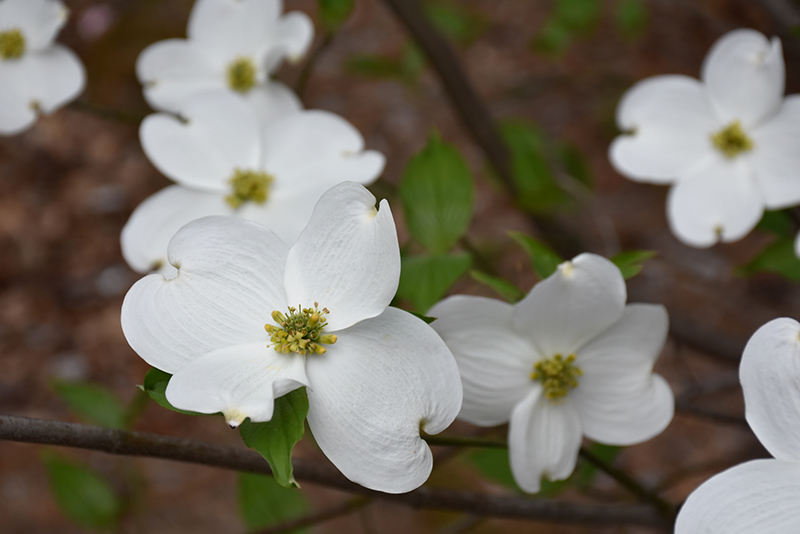Dogwood Tree, Jean's Appalachian Snow Cornus florida 'Jean's Appalachian Snow' Height: 20 feet Spread: 20 feet
Sunlight:
Hardiness Zone: 5a Description: This prolific spring bloomer has pretty white bracts that are large and stiff; an upright tree with layered branches & rounded form; great red fall color. Grows best with protection from the heat & wind, well-drained acidic soil & adequate precipitation. Ornamental Features Dogwood Tree, Jean's Appalachian Snow features showy bracted creamy white flowers with white bracts held atop the branches from early to mid spring. It has dark green deciduous foliage. The pointy leaves turn an outstanding dark red in the fall. It produces red berries from early to late fall. The fruit can be messy if allowed to drop on the lawn or walkways, and may require occasional clean-up. The warty gray bark adds an interesting dimension to the landscape. Landscape Attributes Dogwood Tree, Jean's Appalachian Snow is a deciduous tree with a stunning habit of growth which features almost oriental horizontally-tiered branches. Its average texture blends into the landscape, but can be balanced by one or two finer or coarser trees or shrubs for an effective composition. This tree will require occasional maintenance and upkeep, and should only be pruned after flowering to avoid removing any of the current season's flowers. It is a good choice for attracting birds to your yard. It has no significant negative characteristics. Dogwood Tree, Jean's Appalachian Snow is recommended for the following landscape applications; Planting & Growing Dogwood Tree, Jean's Appalachian Snow will grow to be about 20 feet tall at maturity, with a spread of 20 feet. It has a high canopy with a typical clearance of 6 feet from the ground, and is suitable for planting under power lines. As it matures, the lower branches of this tree can be strategically removed to create a high enough canopy to support unobstructed human traffic underneath. It grows at a slow rate, and under ideal conditions can be expected to live for 80 years or more. This tree should be grown in a location with partial shade and which is shaded from the hot afternoon sun. It does best in average to evenly moist conditions, but will not tolerate standing water. This plant should be periodically fertilized throughout the active growing season with a specially-formulated acidic fertilizer. It is not particular as to soil type, but has a definite preference for acidic soils, and is subject to chlorosis (yellowing) of the foliage in alkaline soils. It is quite intolerant of urban pollution, therefore inner city or urban streetside plantings are best avoided, and will benefit from being planted in a relatively sheltered location. Consider applying a thick mulch around the root zone in both summer and winter to conserve soil moisture and protect it in exposed locations or colder microclimates. This is a selection of a native North American species. Special Attributes Dogwood trees are under story trees that grow best in an established neighborhood that provides heat and wind protection from larger trees.The fruit is approximately 1/2 to 3/4 inch berries, generally eaten by birds. All Cornus are classified as nontoxic plants.![]()
![]()
![]()
![]()
![]()
![]()
![]()
![]()
![]()
![]()
![]()
![]()
![]()
![]()

